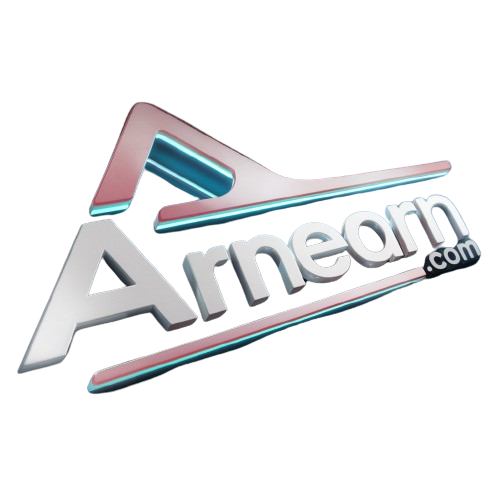Mastering the Art of Engaging HR Presentations: A Step-by-Step Guide

Are you tired of sitting through boring HR presentations that leave you yawning and checking your watch? Do you wish there was a way to captivate your audience and make an impact with every slide? Well, my friend, you’ve come to the right place. In this blog post, we’re going to dive deep into the art of engaging HR presentations and help you become a master presenter. Whether you’re addressing a small team or speaking at a conference, these HR presentation topic step-by-step tips will ensure that your audience is hanging on every word and leaving inspired. So grab your PowerPoint clicker and let’s get started on this presentation journey together!
Importance of HR Presentations
HR presentations play a crucial role in the success of any organization. They are not just about sharing information or updating employees on policies and procedures; they are an opportunity to engage, inspire, and motivate your audience.
One of the key reasons why HR presentations are important is because they help create a sense of unity and alignment within the company. When you present relevant and meaningful content, employees feel connected to the goals and values of the organization. It helps them understand how their individual roles contribute to the bigger picture.
Furthermore, HR presentations provide a platform for effective communication between management and employees. It’s an opportunity for leaders to share updates, address concerns, and foster transparency. By presenting information in a clear and engaging manner, you can ensure that everyone is on the same page – minimizing confusion or misinterpretations.
Another vital aspect is employee engagement. Well-crafted HR presentations have the power to captivate your audience’s attention from start to finish. When delivered with enthusiasm and purpose, they can spark excitement among your team members about new initiatives or projects.
Moreover, HR presentations serve as a tool for training and development within organizations. Whether it’s providing orientation sessions for new hires or conducting workshops on specific topics like diversity or leadership skills – well-designed presentations can effectively convey knowledge while keeping participants engaged throughout the session.
Never underestimate the importance of HR presentations in fostering unity, enhancing communication channels, boosting employee engagement levels,
and facilitating learning opportunities within your organization.
Understanding Your Audience
Understanding Your Audience
When it comes to delivering a successful HR presentation, one of the key factors is understanding your audience. After all, you want to ensure that your message resonates with them and meets their specific needs and expectations.
To start off, take some time to research and gather information about your audience. Find out who they are, what their roles are within the organization, and what their priorities or pain points might be. This will help you tailor your content in a way that speaks directly to them.
Additionally, consider the demographics of your audience. Are they predominantly older or younger? Do they have different cultural backgrounds or language preferences? Understanding these nuances can help you adapt your communication style accordingly.
Furthermore, think about the level of knowledge and expertise that your audience has on the topic at hand. Are they familiar with HR jargon and concepts? Or do you need to simplify complex ideas for better comprehension?
Try to anticipate any potential objections or concerns that may arise from your audience during the presentation. By addressing these proactively in your content, you can build credibility and establish yourself as someone who truly understands their needs.
In conclusion,
By taking the time to understand your audience before crafting an HR presentation, you set yourself up for success. Tailoring your content specifically to meet their needs ensures that you capture their attention from start to finish. So go ahead – dive deep into researching who will be sitting in those chairs when you present!
Preparing the Content for Your Presentation
In today’s fast-paced and competitive business world, mastering the art of engaging HR presentations is more important than ever. Whether you’re presenting to a small team or addressing a large audience, your ability to captivate and connect with your listeners can make all the difference in getting your message across effectively. In this step-by-step guide, we have explored the importance of HR presentations, understanding your audience, and preparing the content for your presentation.
When it comes to preparing the content for your HR presentation, there are several key factors to consider. You need to clearly define the objectives of your presentation. What do you want to achieve? Are you trying to inform, persuade or motivate? Once you have clarity on this aspect, it becomes easier to structure and organize your content accordingly.
Next, think about how best to present complex information in a simple and digestible manner. Use visuals such as charts or graphs whenever possible to help illustrate key points. Break down information into bite-sized pieces that are easy for your audience to understand and remember.
Another important consideration is tailoring your content specifically for your audience. Take into account their background knowledge, interests, and needs when selecting what information will be most relevant and valuable for them. This will not only keep them engaged but also show that you have taken the time and effort to understand their specific concerns.
Furthermore, incorporating storytelling techniques can greatly enhance engagement levels during an HR presentation. People naturally connect with stories because they evoke emotions and create memorable experiences. Share real-life examples or case studies that demonstrate how certain HR initiatives have made a positive impact on individuals or organizations.
Lastly but certainly not leastly (if I may borrow from Shakespeare), practice makes perfect! Rehearse delivering your presentation multiple times before the actual event so that you feel confident in both what you say and how you say it. Pay attention not only to the words themselves but also non-verbal cues such as body language and vocal tone. This will help you establish a strong presence and connection with your
